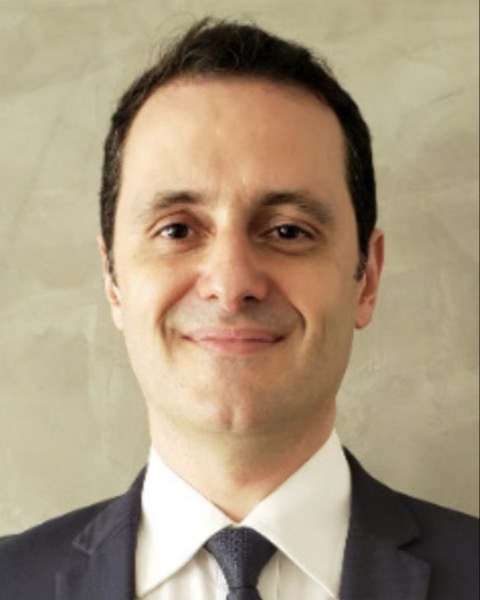SIR 2025
Interventional Oncology
Scientific Session
Late Breaking Abstracts
Ultrasound-Guided Cryoablation, Laser or Radiofrequency Ablation of Cervical Metastases From Thyroid Carcinoma: a Prospective Clinical Trial

Ricardo M C Freitas, MD, PhD, MBA (he/him/his)
Professor of Radiology
Instituto de Radiologia - INRAD HCFMUSP, Brazil- PA
Pedro N B Araujo, MD
Radiology Assistant
Ultrasound Unit, Instituto do Cancer do Estado de Sao Paulo FMUSP, Brazil - ES
Erick F. Santos, MD
Radiology Assistant
Ultrasound Unit, Instituto do Cancer do Estado de Sao Paulo FMUSP, Brazil - LC
Luciana A. Castro-Neves, MD, PhD
Endocrinology Assistant
Endocrinology Department, Instituto do Cancer do Estado de Sao Paulo, Brazil - DD
Debora L S Danilovic, MD, PhD
Professor of Endocrinology
Endocrinology Department HCFMUSP, Brazil - LK
Luiz Kowalski, MD, PhD
Full Professor
Head and Neck Surgery Department HCFMUSP, Brazil - MK
Marco A V Kulcsar, MD, PhD
Professor of Head and Neck Surgery
Head and Neck Department HCFMUSP, Brazil - MC
Maria Cristina Chammas, MD, PhD
Professor of Radiology
Instituto de Radiologia - INRAD HCFMUSP, Brazil - AH
Ana O. Hoff, MD, PhD
Head of Thyroid Cancer Unit - ICESP FMUSP
Endocrinology Department of HCFMUSP, Brazil
Presenting Author(s)
Author/Co-author(s)
Materials and Methods:
This prospective clinical trial obtained IRB approval. All subjects provided informed consent. Eligible subjects presented with up to six concurrent LNMs between 0.8-4.0 cm diameter. US examinations were conducted at baseline, 6, 12, and 24-months. Changes in tumor volume, technical success, complications, tumor markers and need for additional surgery were evaluated. Data was collected in a web-based electronic data tool. Statistical analyses used 0.05 significance levels Shapiro-Wilk, Kruskall-Wallis, Friedman and Qui-Square tests.
Results:
Eighty-four patients (n=165 tumors) were treated, 71 with DTC (84.5%) and 13 with MTC (15.5%). The median age was 55.5-year-old, 63 (75%) being women. Twenty-eight patients (131 LNMs) were randomly assigned for each ablation group. Fifteen patients (17.9%) who developed 34 new LNMs underwent ablation (CA) overtime (total treated LNMs: 165). Two LNMs were not amenable to treatment after hydrodissection attempt. Technical success was 98.8%. General baseline, 6-, 12- and 24-month LNM volume (cc) were: 1.20±3.14 (n=84); 0.33±1.60 (n=74); 0.15±0.73 (n=60); and 0.10±0.36 (n=45). LNMs VRR at 6-, 12-, and 24-months increased in all groups (P< 0.05). Two LNMs (1.2%) showed volume regrowth. Baseline and 24-month mean serum Tg (n=22) were 5.3±9.8 ng/mL, and 1.9±3.6 ng/mL. One severe AE (1.2%) (1/84) - a vague nerve lesion leading to vocal cord palsy, prolonged hospitalization, pulmonary infection and death occurred in a patient with widely metastatic disease. No moderate AE was observed. Mild AE were transient hoarseness 9.5% (8/84), cutaneous fistula with spontaneous resolution 1.2% (1/84), and persistent hoarseness due to unilateral vocal cord palsy 1.2% (1/84). No subsequent therapies were required to the treated LNMs.
Conclusion:
Thermal ablation modalities (LA, RF, CA) were both feasible, effective, and safe for well-selected patients, providing adequate local control of LNMs. No significant differences among the three ablation methods regarding complications, side effects, and tolerability were observed. Thermal ablation is an alternative therapy for treating cervical LNMs from thyroid carcinoma.


.jpg)